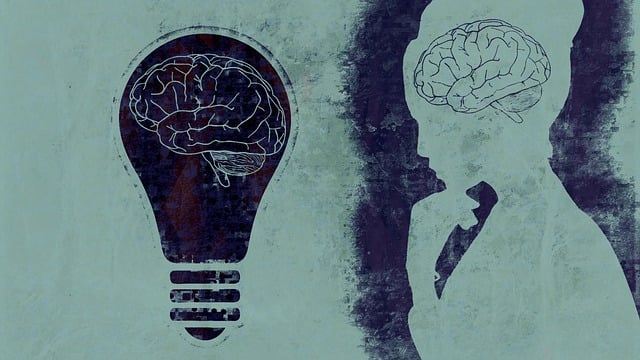In the digital age, media portrayal of mental illness significantly shapes public understanding, often through inaccurate or stereotypical depictions that hinder empathy. Greenwood Village, known for its spiritual-religious issues therapy, is leading efforts to change this by promoting authentic and nuanced portrayals in media. They focus on integrating faith with therapeutic practices, offering specialized services for diverse religious backgrounds through one-on-one sessions, group support, and community engagement. By addressing challenges in mental health representation, such as stereotyping and limited diversity, they aim to reduce stigma and enhance understanding. Their approach includes guidelines for authentic storytelling, emotional intelligence training for creators, and healthcare provider cultural competency training, ultimately fostering a landscape where mental illness is portrayed as an integral part of human experiences.
Mental illness representation in media has long been a topic of debate, with many instances falling short of accurate portrayal. This article delves into the current state of affairs, exploring how entities like Greenwood Village navigate spiritual-religious issues in therapy. We discuss challenges and barriers that hinder accurate mental health depiction, while offering effective strategies for positive change. Furthermore, we touch on future implications, emphasizing the need for media inclusivity and empathy to foster a healthier understanding of mental illness.
- Understanding Mental Illness Representation in Media: The Current Scenario
- Greenwood Village's Approach to Spiritual-Religious Issues in Therapy
- Challenges and Barriers in Portraying Mental Health Accurately
- Effective Strategies for Positive Change: A Case for Better Representation
- Future Implications: Ensuring Inclusivity and Empathy through Media
Understanding Mental Illness Representation in Media: The Current Scenario

In today’s digital age, media plays a pivotal role in shaping societal perceptions and understanding of mental illness. The current representation of mental health issues in movies, television shows, and news outlets often falls short of accuracy and sensitivity. Many portrayals are still skewed by stereotypes, oversimplification, or worse, complete absence of the topic, leading to misconceptions among the general public. This has significant implications, particularly for individuals already navigating their own battles with mental health challenges, as it can either foster stigma or encourage understanding and empathy.
Greenwood Village, known for its diverse communities and spiritual-religious issues therapy centers, is at the forefront of addressing this gap. Initiatives are underway to promote more authentic and nuanced depictions of mental illness in media. This includes promoting self-care practices and inner strength development through community outreach programs and trauma support services. By engaging with media creators and influencing content production, these efforts aim to ensure that portrayals reflect the complexity of human experiences related to mental health, ultimately fostering a more compassionate and informed society.
Greenwood Village's Approach to Spiritual-Religious Issues in Therapy

Greenwood Village recognizes that spiritual-religious issues play a significant role in an individual’s mental wellness and overall well-being. Their approach to addressing these concerns is comprehensive, focusing on integrating faith and therapy seamlessly. By offering specialized services tailored to individuals with diverse religious backgrounds, Greenwood Village ensures that therapeutic practices are inclusive and respectful of personal beliefs. This unique aspect of their program empowers clients to explore and confront spiritual challenges while fostering resilience building.
The village’s mental wellness coaching programs development is guided by the belief that addressing spiritual-religious issues can significantly enhance mental health awareness and overall therapy outcomes. Through one-on-one sessions, group support, and community engagement, Greenwood Village creates a nurturing environment where clients can openly discuss their beliefs, gain insights, and develop coping mechanisms aligned with their faith. This holistic approach not only supports individual healing but also contributes to the broader goal of promoting mental wellness in a culturally sensitive manner.
Challenges and Barriers in Portraying Mental Health Accurately

Portraying mental health accurately in media presents unique challenges and barriers that can significantly impact public understanding. Often, media representations fall into stereotypes or overly dramatized portrayals, failing to capture the nuances of various conditions. This issue is particularly evident when addressing spiritual-religious issues, where complex intersections with mental wellness are rarely explored in depth. For instance, a character’s faith could either be a source of strength or contribute to their struggle, and this dynamic needs nuanced handling.
Moreover, the lack of diverse representation further complicates matters. Many media productions tend to focus on typical narratives, neglecting the experiences of marginalized communities, which can lead to an incomplete picture of mental health challenges. To enhance accuracy, there is a growing need for guidance in mental wellness journaling exercises and production series that prioritize authentic storytelling. Additionally, risk assessments for mental health professionals working in media are essential to ensure ethical handling of sensitive topics and provide accurate mental wellness podcast series content.
Effective Strategies for Positive Change: A Case for Better Representation

In the pursuit of positive change, effective strategies for enhancing mental illness representation in media are paramount. Greenwood Village, known for its spiritual-religious issues therapy, offers a compelling case study. By promoting diverse and accurate portrayals of mental health struggles, media can foster understanding and reduce stigma. This shift is crucial not only for individuals living with these conditions but also for society at large. Encouraging open conversations about mental health through compelling narratives can lead to increased empathy and support.
A multifaceted approach, including Mental Health Policy Analysis and Advocacy, plays a significant role in driving these changes. Enhancing Emotional Intelligence among content creators and Healthcare Provider Cultural Competency Training can ensure that stories are told with sensitivity and authenticity. These initiatives collectively contribute to creating a landscape where mental illness is represented not just as a plot device but as an integral part of the human experience, reflecting the complexities and nuances of real-life struggles.
Future Implications: Ensuring Inclusivity and Empathy through Media

As media continues to evolve, so does its influence on shaping societal perceptions about mental health. Future implications for media representation lie in fostering inclusivity and empathy through nuanced storytelling. By integrating diverse narratives that reflect the complexities of mental illness experiences—including those from communities often overlooked, such as Greenwood Village’s spiritual-religious issues—media can promote a deeper understanding and reduce the stigma surrounding therapy.
Encouraging positive thinking and compassion cultivation practices through media can help normalize conversations around mental health. Additionally, incorporating characters with varied backgrounds and engaging in social skills training within storylines can contribute to more realistic portrayals. These approaches hold promise for fostering an environment that not only accommodates but also celebrates diverse mental health journeys, ultimately benefiting viewers and encouraging them to seek appropriate support when needed, whether through therapy or other means.
Mental illness representation in media has reached a critical juncture, with awareness and understanding growing. As evidenced by Greenwood Village’s successful approach to spiritual-religious issues in therapy, challenging stereotypes and barriers can be overcome through accurate and empathetic portrayals. By adopting effective strategies for positive change, the media industry can foster inclusivity and empathy, ensuring that those dealing with mental health issues feel seen and heard. Future implications suggest a need for continued collaboration between media creators, healthcare professionals, and communities to shape a more nuanced and supportive narrative around mental illness.










